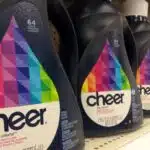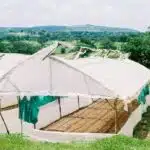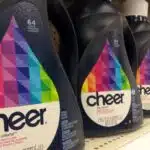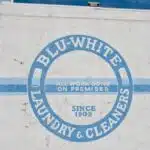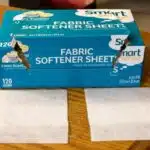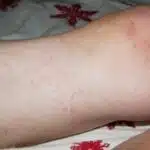As a laundry care expert, I have come across several clients who struggle with keeping their white sheets white. White sheets are an essential part of any bedding collection and add a crisp, clean look to the overall ambiance of a room. However, maintaining their pristine whiteness can be a daunting task, especially if you do not know how to take care of them correctly.
In this article, I will provide you with some tips and tricks on how to keep your white sheets white for longer. From washing techniques to stain removal methods, these tips will help you maintain the natural brightness of your sheets without compromising their texture or quality. With proper care and attention, your white sheets can remain as good as new even after several washes. So let’s dive in and explore some simple yet effective ways to keep your white sheets looking fresh and clean!
Understanding The Importance Of Proper Care For White Sheets
When it comes to keeping white sheets white, understanding fabric composition and proper folding techniques are crucial. White sheets are a classic bedding choice that exudes elegance and sophistication. However, they are also notoriously difficult to maintain because they show dirt, sweat, and stains more quickly than colored fabrics. As such, it is imperative to take extra care in handling them.
Understanding fabric composition is the first step in properly caring for white sheets. White sheets are typically made of cotton or a cotton blend material. Cotton is an absorbent fabric that can easily hold onto dirt and oils from our skin. Therefore, it is important to wash them frequently to prevent buildup. Additionally, cotton fibers tend to weaken with exposure to harsh detergents or high heat settings on dryers.
Proper folding techniques are also essential in maintaining the quality of white sheets. Folding them neatly prevents creases and wrinkles that can become permanent over time. Always ensure that the sheets are completely dry before folding or storing them away as dampness can lead to mildew growth. By taking these steps, you can prolong the life of your white sheets and keep them looking bright and fresh for years to come.
Understanding fabric composition and proper folding techniques are just the beginning of keeping white sheets in pristine condition. The next step is choosing the right detergent that effectively removes stains without damaging the fabric’s integrity.
Choosing The Right Detergent
- When selecting the right detergent for keeping white sheets white, ingredients, brighteners, natural solutions, types of stains, whitening agents, and pre-treating should all be taken into consideration.
- Additionally, cost, environmental impact, fragrance, allergens, machine compatibility, scent boosters, organic options, color-safe options, and stain removal techniques should be researched before making a purchase.
- Brighteners are often used to keep whites crisp and bright, however, it is important to ensure that the particular brightener used does not leave a residue on the fabric.
- Pre-treating can be an effective way to remove certain stains, however, it is important to check the garment’s care label before treating, as pre-treating can in some cases damage the fabric.
- When selecting a detergent, cost and environmental impact should both be taken into consideration.
- Additionally, it is important to consider fragrance, allergens, machine compatibility, scent boosters, organic options, color-safe options, and stain removal techniques when choosing the right detergent.
Ingredients
White sheets are a staple in any bedroom, but keeping them white can be a challenge. One of the most important factors to consider when trying to keep your white sheets looking bright is choosing the right detergent. There are various options available for laundry detergents, and it’s essential to find one that works well for you.
When selecting a detergent for your white sheets, it’s crucial to choose one that contains natural alternatives. Many conventional laundry detergents contain harsh chemicals such as phosphates and bleach, which can be damaging to both your sheets and the environment. Opting for natural alternatives like plant-based detergents or DIY solutions made with baking soda and vinegar can be effective in removing stains while being gentle on your linens.
Another factor to consider when selecting a detergent is its ability to remove tough stains without damaging the fabric. Some detergents are designed specifically for whites and may contain enzymes that break down organic stains like sweat or blood. However, it’s essential to use these types of detergents sparingly as they can sometimes cause discoloration over time.
In conclusion, choosing the right detergent is crucial when trying to keep your white sheets looking their best. By opting for natural alternatives and selecting a detergent designed specifically for whites, you can effectively remove stains while being gentle on your linens’ fabric. Remember always to follow care instructions carefully and avoid using too much detergent or harsh chemicals that could damage your bedding over time.
Brighteners
When choosing the right detergent for your white sheets, using brighteners is an option that many people consider. Brighteners are additives used in laundry detergents to enhance the appearance of fabrics by creating an optical illusion. They work by absorbing invisible ultraviolet light and reflecting it back as visible blue light, making whites appear brighter and colors more vibrant.
One of the advantages of using optical brighteners in laundry detergent is that they can give your white sheets a bright, fresh appearance that lasts longer than the initial wash. They can also be effective in removing yellowing caused by age or exposure to sunlight. Additionally, some laundry detergents combine brighteners with stain-fighting enzymes to offer a two-in-one solution for keeping your whites looking their best.
However, there are also some potential drawbacks to using optical brighteners in laundry detergent. First, they do not actually clean or remove stains from fabric but only enhance its appearance. Second, overuse of brighteners can lead to discoloration or a bluish tint on white fabrics over time. Finally, some people may experience allergic reactions or skin irritation from exposure to optical brighteners.
In conclusion, while using brighteners in laundry detergent can be an effective way to enhance the appearance of your white sheets, it’s important to weigh the pros and cons carefully before making a decision. Consider factors such as how often you wash your sheets and whether you have any allergies or sensitivities before choosing a detergent with optical brighteners. As always, follow care instructions carefully and avoid overusing any product that could potentially damage your bedding over time.
Natural Solutions
When it comes to choosing the right detergent for your white sheets, there are various factors to consider. While optical brighteners can be effective in enhancing the appearance of fabrics, they may not be suitable for everyone. For those who prefer more natural solutions, DIY remedies and eco-friendly options are worth exploring.
One popular natural solution is using vinegar in the wash cycle. Vinegar is a mild acid that can help remove stains and odors from fabrics without damaging them. Simply add half a cup of white vinegar to the rinse cycle to brighten and soften your whites. Another option is baking soda, which can help whiten and deodorize fabric by neutralizing acids and bases. Add half a cup of baking soda to the wash cycle along with your regular detergent for best results.
If you’re looking for an eco-friendly option, consider using a plant-based laundry detergent or soap nuts. These products are made from renewable resources and biodegradable ingredients, making them safer for the environment than traditional detergents. They are also gentle on fabrics, making them ideal for delicate items such as linens and towels.
In summary, while optical brighteners have their benefits, they may not be suitable for everyone’s needs or preferences. If you’re looking for natural solutions to keep your whites looking their best, vinegar and baking soda are effective DIY remedies that won’t break the bank. For those who want to reduce their environmental impact, plant-based laundry detergents or soap nuts are eco-friendly options worth considering.
Pre-Treating Stains
Removing stains from white sheets can be a challenge, but with the right techniques and products, it can be done effectively. First and foremost, it is important to treat any stains as soon as possible, before they have a chance to set in. This means taking immediate action when spills or accidents occur, rather than waiting until laundry day.
When it comes to effective stain removers, there are many options available on the market. Some people prefer natural solutions like vinegar or baking soda, while others opt for commercial products specifically designed for removing stains. It is important to read the label carefully and follow the instructions closely to ensure that the product is suitable for use on white sheets and won’t cause any damage or discoloration.
Regardless of which stain remover you choose, it is important to test it on an inconspicuous area of the sheet first before using it on a larger stain. This will help you avoid any potential damage or unintended consequences. With patience and persistence, most stains can be removed from white sheets with ease.
Moving forward into soaking sheets before washing, this step can also be helpful in keeping your white sheets looking their best. By allowing them to soak in a solution of water and laundry detergent before washing, you can loosen any dirt or grime that may have accumulated over time. This will make them easier to clean in the washing machine and help prevent future staining.
Soaking Sheets Before Washing
For those seeking to maintain the pristine condition of their white sheets, soaking them before washing can be a game-changer. Soaking techniques have been used for centuries to aid with the removal of tough stains and restore the original brightness of fabrics. By taking this extra step, you can ensure that your white sheets remain as beautiful and clean as the day you bought them.
When it comes to soaking white sheets, there are a few things to keep in mind. First and foremost, never use bleach on your sheets unless they are 100% cotton or linen. Bleach can weaken fabric fibers and cause yellowing over time, leading to premature wear and tear. Instead, try using bleach alternatives such as hydrogen peroxide or vinegar for a gentler approach.
To get started with soaking your white sheets, follow these steps:
- Fill a large container or bathtub with warm water
- Add a gentle detergent and stir until dissolved
- Submerge your white sheets completely in the soapy water
- Let soak for at least an hour (or overnight for heavily stained sheets)
By incorporating soaking into your laundry routine, you can extend the life of your white sheets while keeping them looking bright and fresh. In the next section, we will explore another crucial aspect of caring for white sheets: washing them in cold water.
Washing In Cold Water
- Cold water washing is an effective and efficient way of keeping white sheets looking their whitest.
- Detergents specifically formulated for use in cold water provide optimal cleaning without the risk of fading color.
- Adding a cup of white vinegar to a cold water rinse cycle can help to brighten whites and prevent yellowing.
- Pre-treating or spot treating stains with a cold water solution of baking soda, hydrogen peroxide, and detergent can help to remove even the toughest of stains.
- Cold water washing can save energy, reduce water usage, and prolong the life of delicate fabrics.
- Careful selection of detergents, pre-treating of stains, and the use of white vinegar can all ensure that whites remain white when cold water washing.
Benefits Of Cold Water Washing
One of the most persistent myths about washing white sheets is that hot water is necessary to get them clean and bright. However, this couldn’t be further from the truth. In fact, there are many benefits of cold water washing when it comes to maintaining the appearance and longevity of your white sheets.
Firstly, cold water washing is much gentler on fabrics than hot water. When exposed to high temperatures, fibers can become damaged or shrink, which can lead to premature wear and tear. Additionally, using cold water can help preserve the color and brightness of your sheets over time. This is because hot water can cause dye molecules to break down and fade more quickly.
Another benefit of cold water washing for white sheets is that it can be more energy-efficient than using hot water. Since heating up water accounts for a significant portion of the energy used in a typical laundry cycle, choosing to wash in cold water can help reduce your overall environmental impact while also saving you money on your utility bills.
In conclusion, while there are many myths about washing white sheets that may lead you to believe that hot water is always best, the truth is that there are many benefits of cold water washing as well. By opting for cooler temperatures when laundering your sheets, you can help keep them looking their best for longer while also being kinder to both your wallet and the environment.
Cleaning Agents For Cold Water Washing
When it comes to washing in cold water, choosing the right cleaning agents is just as important as the temperature of the water itself. Many traditional laundry detergents are formulated for use with hot water, which can make them less effective when used in cooler temperatures. However, there are many green cleaning options available that are specifically designed for use with cold water.
One popular DIY alternative to traditional laundry detergent is a mixture of baking soda and white vinegar. Baking soda helps to lift dirt and stains from fabrics while also neutralizing odors, while white vinegar acts as a natural fabric softener and helps to brighten whites. Simply add 1/2 cup of baking soda and 1/2 cup of white vinegar to your washing machine along with your cold water and sheets.
Another option for green cleaning in cold water is to look for eco-friendly laundry detergents that are specifically designed for use with cooler temperatures. These products often contain enzymes or other active ingredients that help to break down stains and dirt even without the use of hot water. Additionally, they are typically free from harsh chemicals and additives that can be damaging to both fabrics and the environment.
In summary, choosing the right cleaning agents is essential when washing in cold water. DIY alternatives like baking soda and white vinegar can be effective at lifting stains and brightening whites, while eco-friendly laundry detergents offer an easy solution for those who prefer a pre-made product. By incorporating these green cleaning options into your laundry routine, you can help reduce your environmental impact while still achieving clean, bright sheets every time you wash.
Stain Removal For Cold Water Washing
Stain prevention is one of the primary concerns when washing in cold water. The lower temperature can make it harder to remove tough stains and dirt, especially those that have set into fabrics for a long time. Therefore, it is essential to choose the right stain removal methods and products when washing in cold water.
One effective way to prevent stains from setting into fabrics is by treating them immediately before washing. This can be done by using a stain remover or pre-treating with a mixture of water and laundry detergent. Another option is to soak the stained area in cold water for several hours before washing to loosen up the dirt.
When it comes to effective detergents, choosing one that is specifically designed for cold-water washing can make a significant difference in removing stains. These detergents often contain enzymes or other active ingredients that help break down tough stains without the need for hot water. They are also free from harsh chemicals and additives that can damage fabrics and the environment. By incorporating these strategies into your laundry routine, you can effectively prevent stains from setting in while still achieving clean and fresh-smelling clothes every time you wash.
Avoiding Bleach
Understanding Bleach Alternatives
Bleach is a commonly used laundry product that can help remove tough stains and keep your white sheets looking bright. However, bleach can be harsh on fabrics and may cause damage over time. Fortunately, there are alternative products that can be used to whiten your sheets without the use of bleach.
One alternative to bleach is hydrogen peroxide. Hydrogen peroxide is a natural whitening agent that can help remove stains and brighten white fabrics. To use hydrogen peroxide as a bleach alternative, simply add it to your washing machine along with your regular laundry detergent. Be sure to follow the instructions on the bottle for safe usage.
Another option for whitening your sheets naturally is to use baking soda. Baking soda is an alkaline substance that can help remove dirt and grime from your sheets, leaving them looking fresh and clean. To use baking soda as a natural whitener, add one cup of baking soda to your washing machine along with your regular laundry detergent.
Natural Whitening Options
In addition to using alternatives to bleach, there are also natural options for whitening your sheets. One of these options is vinegar, which has natural bleaching properties that can help remove stains and whiten fabrics. To use vinegar as a natural whitener, simply add one cup of distilled white vinegar to your washing machine during the rinse cycle. Vinegar will not only whiten your sheets but also help eliminate odors and soften fabrics.
Using vinegar as a natural whitener is an effective way to keep your white sheets looking their best without the use of harsh chemicals like bleach. By understanding the different alternatives available for whitening, you can choose the method that works best for you and keep your sheets looking bright and clean for years to come.
Using Vinegar As A Natural Whitener
While avoiding bleach is important to maintain the quality of your white sheets, there are other natural methods that can help keep them white. Vinegar is one such alternative that has been used for centuries as a natural whitener. It not only helps remove stains but also acts as a fabric softener, making it an excellent choice for your laundry care needs.
Benefits of using vinegar as a natural whitener:
- Vinegar is non-toxic and safe to use on all fabrics.
- It is more cost-effective than commercial bleach or other laundry detergents.
- Vinegar helps to remove tough stains without damaging the fabric fibers.
- It leaves no residue, which means your sheets will be softer and more comfortable to sleep on.
To use vinegar as a natural whitener, add half a cup of white vinegar to your washing machine during the rinse cycle. You can also mix it with baking soda and warm water to create a paste and apply it directly to any stubborn stains before washing. Be sure to rinse thoroughly after washing to avoid any lingering vinegar smell.
In addition to using vinegar, drying your white sheets on a low heat setting can also help maintain their brightness. High temperatures can cause yellowing and damage the fabric fibers. By following these simple steps and incorporating these alternatives into your laundry routine, you can keep your white sheets looking fresh and bright for years to come.
Drying On A Low Heat Setting
After washing your white sheets, it’s important to dry them properly to maintain their pristine color. Drying on a low heat setting is an effective way to prevent shrinkage and damage to the fabric while also keeping your sheets looking their best. Low heat settings ensure that the sheets won’t be exposed to high temperatures that can cause discoloration or yellowing.
One of the benefits of air drying your white sheets is that it eliminates any risk of shrinkage or damage from high heat settings. Additionally, air drying allows for natural fluffiness and softness without having to rely on dryer sheets or fabric softeners. If you prefer using a dryer, consider adding wool or plastic dryer balls for added fluffiness and reduced static cling.
Using a low heat setting in your dryer can help save energy and reduce your carbon footprint, making it an eco-friendly option for drying your white sheets. However, it’s important to avoid direct sunlight when drying as this can lead to fading and discoloration over time. By following these tips, you’ll be able to keep your white sheets looking fresh and bright wash after wash.
Avoiding Direct Sunlight
As the old saying goes, “sunlight is the best disinfectant.” However, when it comes to keeping white sheets white, direct sunlight can actually have the opposite effect. Exposure to direct sunlight can cause yellowing and discoloration, leaving your once bright sheets looking dull and dingy. Therefore, it’s important to take precautions to avoid exposing your white sheets to direct sunlight.
One of the most effective tips for preventing yellowing is to store your white sheets properly. When not in use, be sure to store them in a cool, dry place away from direct sunlight. You may also want to consider using acid-free tissue paper or muslin bags for added protection. This will help prevent any potential discoloration caused by exposure to light and air.
In addition to proper storage, there are other steps you can take to keep your white sheets looking their best. One option is to use a fabric whitener or bleach alternative specifically designed for white fabrics. Another tip is to wash your white sheets separately from colored items and avoid using too much detergent. By following these simple tips, you can help ensure that your white sheets stay bright and beautiful for years to come.
As important as it is to avoid direct sunlight when storing your white sheets, there are other factors that can impact their appearance as well. In the next section, we’ll discuss how ironing can help give your sheets a crisp finish that will make them look like new again.
Ironing For A Crisp Finish
To maintain the cleanliness and brightness of your white sheets, it’s essential to take proper care of them. In the previous section, we discussed the importance of avoiding direct sunlight when drying your sheets. Now, let’s move on to ironing for a crisp finish.
Choosing the right iron is crucial when it comes to keeping your white sheets looking pristine. A steam iron with adjustable temperature settings is ideal as it can remove wrinkles without damaging the fabric. It’s important to note that ironing at high temperatures can cause yellowing or even scorch marks on your sheets.
Tips for ironing large sheets include starting from one corner and working your way across in sections. Make sure to use a pressing cloth over any delicate areas such as embroidery or lace trims. Additionally, never leave the hot iron directly on your sheets for too long as this can cause discoloration.
Properly ironed sheets not only look visually appealing but also feel softer and more comfortable against your skin. In the next section, we’ll discuss how storing your white sheets properly can further enhance their longevity and freshness.
Storing Sheets Properly
As a laundry care expert, one of the most important aspects of keeping white sheets pristine is proper storage. Simply washing your sheets and tossing them into a closet or drawer can lead to discoloration and yellowing over time. To avoid this, consider investing in anachronistic methods such as proper folding and vacuum sealing.
Firstly, when folding your white sheets for storage, ensure that they are completely dry. Any moisture left in the fabric can lead to mildew growth and discoloration. Begin by folding the fitted sheet neatly into a rectangle shape, followed by the flat sheet. Then fold both sheets together in thirds or quarters depending on the size of the sheet set.
Secondly, vacuum sealing is an effective way to store white sheets for extended periods of time without risking damage from moisture or pests. Before sealing, fold your sheets as described above and place them into a vacuum seal bag. Use a vacuum cleaner with a hose attachment to remove all air from the bag before sealing it shut.
To summarize, proper folding and vacuum sealing are two key steps in storing white sheets properly to maintain their brightness and crispness over time. Remember to always store clean, dry sheets to prevent mildew growth and discoloration. By following these methods, you can enjoy fresh-looking sheets for years to come.
Transition: Now that we have discussed proper storage techniques for white sheets, it’s also important to consider ways to refresh them between washes.
Refreshing Sheets Between Washes
To keep your white sheets looking fresh and clean between washes, there are several tips that you can follow. One of the most important steps is to shake out your sheets daily. This helps to remove any dust or debris that may have accumulated on the surface of the fabric. Additionally, it can help to fluff up the fibers, making them look less flattened and worn.
Another way to refresh your sheets between washes is by using aromatherapy. Using essential oils in a DIY fabric freshener can provide numerous benefits, such as reducing stress and promoting relaxation. You can make your own fabric freshener by mixing natural ingredients like distilled water, witch hazel, and essential oils in a spray bottle. Simply spritz this mixture onto your sheets before bedtime for a soothing and refreshing scent.
Overall, there are many ways to keep your white sheets looking their best between washes. By following these simple steps and incorporating natural ingredients into your laundry routine, you can ensure that your bedding stays soft, clean, and comfortable over time.
As time goes on, however, you may start to notice yellowing on your white sheets. This is a common issue that can be caused by various factors like sweat or exposure to sunlight. In the next section, we will discuss some tips for dealing with yellowing over time to keep your white sheets looking bright and new for as long as possible.
Dealing With Yellowing Over Time
After refreshing your sheets between washes, it’s important to address another issue that may arise over time: yellowing. Yellowing of white sheets is a common problem and can be caused by various factors such as sweat, body oils, and detergents. In addition, exposure to sunlight and improper storage can also contribute to yellowing.
To prevent yellowing, it’s essential to take proper care of your white sheets. One effective method is to wash them regularly with a high-quality detergent that contains bleach or hydrogen peroxide. Always follow the washing instructions on the label and avoid using hot water as this can cause further damage to the fabric. Additionally, avoid exposing your sheets to direct sunlight for extended periods of time and store them in a cool, dry place.
If you notice that despite taking all the necessary precautions your white sheets are still yellowing, it may be time to consider replacing them. Over time, even with proper care, the fabric can become worn out and lose its whiteness. Knowing when it’s time to replace your sheets is important not only for aesthetic reasons but also for hygiene purposes. Replacing your sheets regularly will ensure that you always have fresh and clean bedding for a good night’s sleep.
Knowing When To Replace Sheets
As much as we try to maintain the quality of our sheets, there comes a time when they require replacement. Determining when it’s time to replace sheets is important for maintaining the hygiene and comfort of your sleeping space. One way to tell if it’s time for a new set of sheets is by checking for signs of wear.
The first sign to look for is thinning fabric. Over time, the material will begin to wear down due to frequent washing and use. This can lead to holes and tears, which not only affect the appearance but also compromise the integrity of the sheet itself. Another sign that it’s time for replacements is discoloration or yellowing of white sheets. Despite regular washing, stains and discolorations may appear on sheets over time, making it difficult to restore their original brightness.
Lastly, another sign of wear is a loss in elasticity. Sheets that have lost elasticity may no longer fit snugly on your bed, leading to discomfort during sleep. Additionally, loose-fitting sheets can bunch up or shift around during sleep, further compromising your comfort level.
Overall, recognizing the signs of wear is essential in determining when it’s time to replace your old sheets with new ones. By doing so, you’ll ensure that your sleeping environment remains comfortable and hygienic. In the next section, we’ll discuss additional tips and tricks for maintaining white sheets after you’ve determined when it’s time for replacements.
Additional Tips And Tricks For Maintaining White Sheets
To keep your white sheets looking pristine, there are additional tips and tricks you can utilize in your laundry routine. One effective technique is to use fabric softener when washing your sheets. Fabric softeners work by coating the fibers of the fabric, thus preventing dirt and grime from sticking to them. Additionally, they give your sheets a pleasant scent that can last for days.
Another option to maintain the whiteness of your sheets is to seek professional laundry services. These services have industrial-strength machines that can clean clothes effectively without damaging them. They also use specialized detergents and bleach solutions that are formulated for white fabrics.
If you prefer to wash your sheets at home, it is essential to avoid using too much detergent or bleach as this can cause yellowing and discoloration. It is also advisable to separate white sheets from other colored fabrics when doing laundry to prevent color transfer. Lastly, hanging your sheets out in the sun after washing them can help keep them bright as sunlight has natural bleaching properties.
To sum up, maintaining white sheets requires some extra effort but it’s definitely worth it in the long run. Using fabric softener, seeking professional laundry services, avoiding overuse of detergent or bleach, separating whites from colored clothes during washes, and air-drying in sunlight are all effective ways of keeping your white sheets looking new and fresh for longer periods!
Conclusion
Proper care for white sheets is essential for maintaining their pristine appearance and ensuring they stay soft and comfortable. Choosing the right detergent, pre-treating stains, soaking sheets before washing, and washing in cold water are all crucial steps to keep your white sheets looking bright. Refreshing sheets between washes can also help maintain their freshness.
However, yellowing over time can occur, and it’s important to know how to deal with it. Knowing when to replace sheets is equally important to maintain a clean and hygienic sleeping environment. Additional tips and tricks such as using baking soda or vinegar can also be helpful in maintaining the quality of your white sheets.
As a laundry care expert, I cannot emphasize enough the importance of proper care for your white sheets. By following these simple steps, you can ensure that your white sheets remain crisp, clean, and inviting. Remember that caring for your bedding is an investment in your comfort and well-being. With a little effort on your part, you can enjoy the luxurious feel of fresh white sheets night after night.
Image Credits
- “Copper sheet (Mesoproterozoic, 1.05-1.06 Ga; White Pine Mine, Ontonagon County, Upper Peninsula of Michigan, USA) 3” by James St. John (featured)





